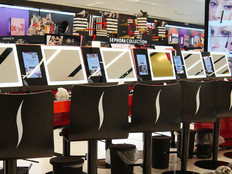The 4 Things Retailers Need to Do When Upgrading Their Networks
For retailers looking to respond to the growth of e-commerce, declining traffic at brick-and-mortar stores and comparison shopping on smartphones, network upgrades can offer a way to deliver differentiated services — and can strike a chord with customers.
Retailers can use wireless networking to offer their customers free Wi-Fi access, special offers and an in-store experience that synchronizes with discounts they may have been offered outside out the stores. Retailers can use their networks to improve digital signage, support mobile point-of-sale terminals and in-store kiosks.
Such network enhancements can improve a retailer’s brand identity and lead to increased sales. Yet there are concrete steps retailers need to take in order to deliver a consistent wireless experience for customers at all of their stores.
In a recent BizTech webinar, “Engaging Retail Customers with Networking Know-How,” John Chancellor, managed services solutions architect at CDW, noted that oftentimes retailers say that their wireless service doesn’t represent their brand. That speaks to what can happen when retailers “deploy technology poorly, or without a strategy or a plan.” So what are the steps retailers need to take when upgrading their networks?
Conduct an Assessment
Priority one is to conduct an assessment of the Local Area Network and Wide Area Network topology to see what the wireless coverage is like at their stores and where it needs to be improved, according to Chancellor. He noted that there may be differences from store to store that need to be addressed. “It’s possible now with today’s technology and today’s skill sets to actually do both onsite and paper-based wireless assessments to make sure that coverage occurs,” he said.
In the end, retailers need to know where to place wireless access points and how many to deploy to deliver reliable, consistent wireless coverage at their locations.
Work with Partners to Develop a Deployment Strategy
One retailers know how they want to configure their wireless coverage, they need to actually get it deployed. Retailers will need to work with vendor partners and systems integrators to get the network equipment procured, brought to store locations and properly set up.
“As soon as you have that plan as to what technology you want to put at these sites, you really want to go and start those benefits as quickly as possible, especially if you have critical events that are coming up, like Black Friday,” Chancellor said.
Retailers need to coordinate with their partners on a clear deployment strategy, and avoid repeated visits by technicians to individual store locations — known as truck rolls — since those tend to be expensive. For every truck roll, therefore, all of the necessary network gear needs to be assembled ahead of time and ready. Chancellor said that while there may be some initial hiccups, ironing out those issues will help avoid repeated truck rolls and make deployments smooth and repeatable.
Call for Backup
Once the wireless networks get deployed, retailers need to be able to assist their customers if any problems arise, Chancellor said. “We know that with any technology, even though you build in a ton of redundancy, even though build in all the resiliency that you want in a solution, from time to time there may be challenges with the customer actually getting connected,” he said.
That’s especially true for wireless networks and mobile applications, and retailers need to have a plan in place to deal with any issues — even if they arise purely from customers and their mobile devices.
Retailers can work with partners to set up help desks for customers to call if they experience issues with wireless networks in stores. Merchants can also give customers coupons or special offers as part of an effort to ameliorate any negative experiences they may have, Chancellor noted. Having store employees direct customers to call a help desk can also free up staff to continue their jobs and help other customers.
Embrace Managed Services
Just getting the technology deployed is merely the start for retailers, Chancellor said. Managed services can be a key part of making sure that the networks are maintained and properly monitored.
“You can get the technology out there, you can get it in the hands of your store owners and your customers, but if there is nobody there to make sure that you are watching it and guaranteeing the availability of that service over time,” retailers may run into issues like network outages and slow service, Chancellor said, serving to weaken the store’s brand image.
Managed services include infrastructure monitoring, asset inventory management, patching the network and location-based reporting on network conditions and activity.
Managed services also free up retailers and their employees to focus on helping customers and selling products and services — not managing the network. “They could continue doing the important, critical things that they were working on, and get all of the benefits of new technology rolled out to their sites,” Chancellor said.
For more, check out BizTech’s webinar, “Engaging Retail Customers with Networking Know-How.”








